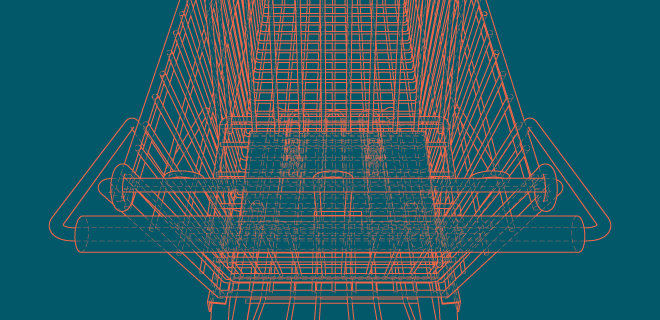
Data privacy might just be the hottest buzzword in digital advertising.
While most of the conversation focuses on how we replace cookies within our media campaigns, the challenges that come with cracking the data privacy code open doors for new areas of opportunity to emerge in a shifting landscape.
Amid the fast-paced, ever-changing digital environment, one thing remains constant: creative excellence is paramount.
Creative has taken center stage as the primary lever to pull when looking to accelerate business results, particularly as marketers are forced to lean into audience consolidation and automation.
How Data Privacy Has Shifted the Way We Run Campaigns
For the past decade, digital campaigns have been informed by readily-available customer data. The right user was served up on a silver platter.
Campaign segmentation was once the key to mastering digital marketing. We filtered out individual search terms to send them to specific Google shopping ad groups, and hyper-segmented our Facebook audiences into individual ad sets.
The more granular the account structure, the better the performance. But continuing this approach in today’s privacy-first world is a death knell.
As consolidation and automation work in tandem to drive efficiency across audience engagement, we have one lever left to pull in this increasingly blind environment: creative.
Audience consolidation is now the cornerstone of navigating a world in which the lines between audiences are blurred by data privacy policies. After onboarding a top ecommerce account, for example, we learned the business was running an audience-segmented Facebook structure, meaning each audience had its own ads.
Combining all interest-based audiences together resulted in +83% more transactions at a -36% lower cost-per-acquisition. The rules of the road have changed in today’s privacy-forward landscape, and audience overlap is rampant. Leaning into this insight, and adjusting accordingly resulted in astounding performance.
As consolidation and automation work in tandem to drive efficiency across audience engagement, we have one lever left to pull in this increasingly blind environment: creative.
How to Prioritize Creative to Succeed
Leading businesses realize that in today’s consolidated and automated world, creative performance will now tell us more about our customers than our campaigns do. This means it’s up to us to qualify our audience directly within the ad, iterate quickly, and think outside the box on how to continue to address them while avoiding fatigue.
Brands must consider how to set accurate expectations for the user directly within the ad, within a one-second view window, while still piquing their interest. Sound simple? It’s not.
One of the most common pitfalls for ecommerce advertisers is failure to accurately identify the product and its features within the ad, leaning on the assumption that users will find a product once they land on site. This thinking is deeply flawed: the average bounce rate of Facebook prospecting ads falls between 50-90%.
Top-tier creative fundamentally generate stronger engagement, and as a result, is better at teaching bidding algorithms who to serve ads to in the first place.
Creative must do the work of accurately portraying your business and/or product while being engaging enough to stop the scroll. If we commit to this, the upside equals more qualified site traffic to retarget and a better shot at converting valuable actions, all as a result of creative excellence.
Additionally, top-tier creative fundamentally generate stronger engagement, and as a result, is better at teaching bidding algorithms who to serve ads to in the first place.
The necessity of speed is no joke when it comes to leaning into creative. All major platforms use optimized ad rotation — meaning that the “top ad” will receive the majority of impressions — it’s not unusual to see one ad drive the majority of performance. Once this happens, the clock is ticking to iterate before ad fatigue sets in.
Too often, we see businesses work off of a pre-planned creative roadmap that moves from concept to concept, without real consideration of how algorithms operate today. If you’re too stuck on a predetermined roadmap, you’re constantly missing the boat on continuing the momentum of successful ads through fast iterations. Businesses that have an agile mindset are strong creative partners because they rapidly respond to top-serving creative, giving them the opportunity to tap into incremental revenue while they’re at it.
Small iterations like taglines, copy, animations, and color schemes are crucial to lengthening the runway of a successful concept while avoiding ad fatigue. I recently tested the exact same ad with both animated and unanimated elements and the animated version converted 7x more. Small changes make a huge difference.
Future Proof With Creative Performance
Whether we like it or not, the user data which previously anchored our audience targeting is largely gone, and with it the manual optimizations marketers became so accustomed to. But like every new era, another opportunity will always present itself.
Leaning into creative now will better prepare businesses for a completely post-cookie world, and accelerate current campaigns in ways previously unimagined.
Now that we’ve identified the key to success in a privacy-first world, marketers must invest in creative.
Gone are the days of shortcutting performance with hyper-targeted audience segmentation. Investing in creative excellence is no longer a nice-to-have, it’s a business imperative.